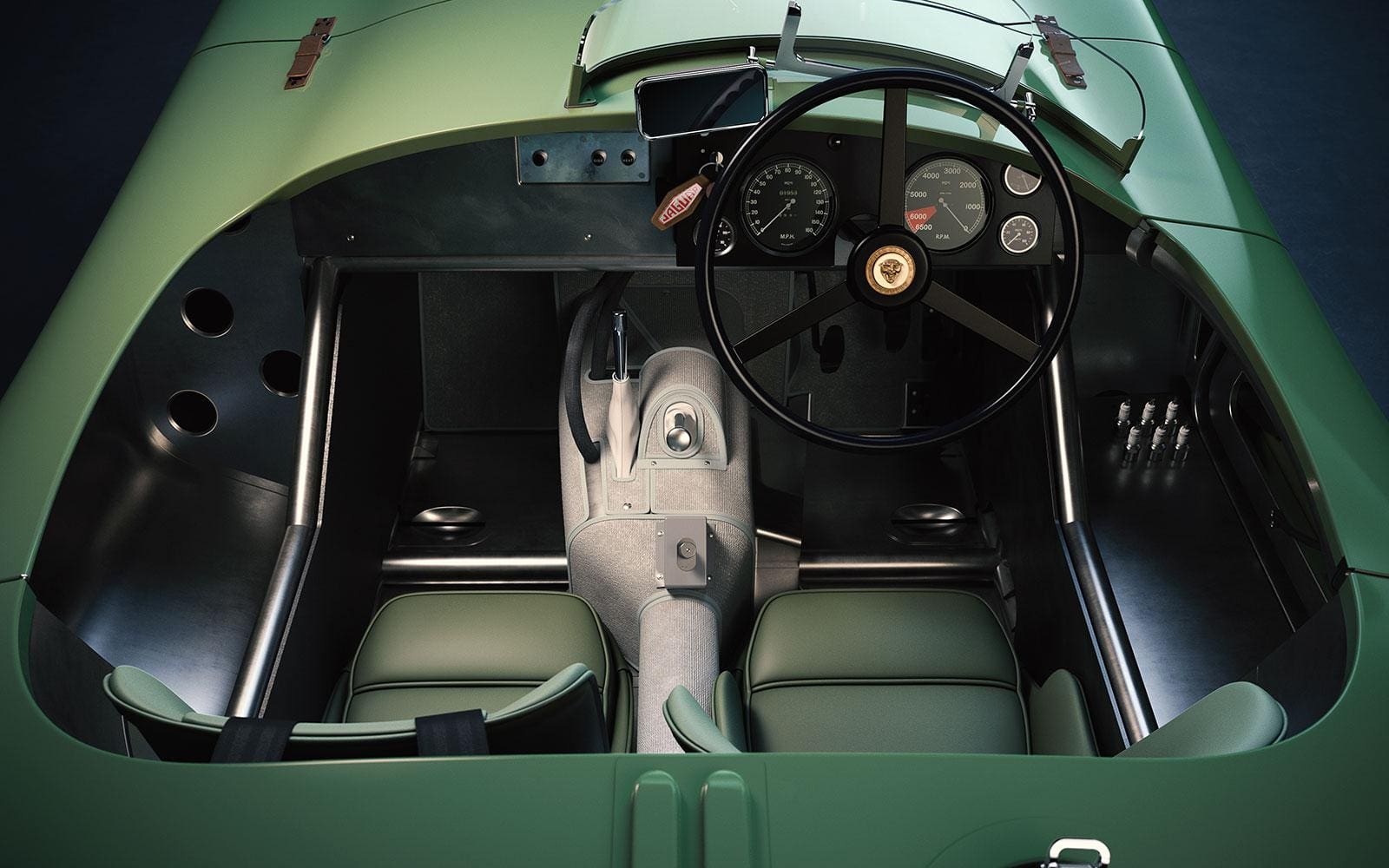
First reveal: The Jaguar C-type Continuation
Jaguar has combined modern build technology with archive material from 70 years ago to create the stunning new C-type Continuation
Launched in 1951 – the year the Jaguar C-Type won Le Mans for the first time – this gorgeous, open-top racing car has now been recreated by Jaguar Classic and offered for an undisclosed price in excess of £1 million. A limited edition run of up to 16 will be handcrafted at Classic’s HQ in Warwickshire. The exact number will depend on demand but all three previous Continuation cars have been a sell-out for Jaguar – despite exorbitant prices.

The first example of the C-type model was unveiled at the Concours of Elegance at Hampton Court Palace on 3 September, one of the highlights of the show. At a sneak preview, the C-type Continuation looks even more amazing in the metal. Sat on gleaming chrome wire wheels, the attention to detail on the Continuation is remarkable – everything from the Lucas electrics fuse-box cover to the unusual brackets originally fitted on the brake fluid reservoir have been faithfully recreated.
Check out the fluid and aerodynamic shape. It was originally penned by designer Malcolm Sayer, who was recruited by Jaguar boss Sir William Lyons to create one of the most important cars in the marque’s history. The pioneering, slippery profile is glorious to behold. It also helped drivers Peter Walker and Peter Whitehead win the 1951 Le Mans race on debut, at an average speed of 93mph. Two years later, a revised C-type finished first, second and fourth, breaking the 100mph average speed record.

In creating the latest Continuation, a deep-dive into the C-type’s illustrious history and heritage was needed, to influence the way in which it should be built, its specification and racing prowess.
Before the physical development could even begin, almost two years of data compilation was completed, kicking off what would become something of a treasure hunt into Jaguar’s archives, drawings, documents and pictures to piece together how to build an iconic car of the 21st century. In a hunt for authenticity, the design team needed to consult the original engineering ledger from the 1950s. Copy typists were recruited to fully digitise everything, with over 2,000 items listed on the original document. All of this information was then checked by Jaguar’s current team of engineers.

Former test driver and engineer, the late Norman Lewis, was able to offer guidance on the build process before he died in 2019. The team also had access to an example C-type and photographs, along with Malcolm Sayer’s notes for the sleek body shape.
A 3D CAD model was then built – the first time a Jaguar Continuation whole vehicle has been created in this way. It began with the major elements of the body and overall structure to provide key visuals to the engineers and ensure everything matched up to the original spec.
Dan Pink of Jaguar Classic, said, “This car is one of the most iconic in Jaguar’s racing history, driven by some of the most admired drivers, including Sir Stirling Moss. The C-type is also particularly notable for the first use of disc brakes – early versions of what we use in modern cars today. Developed with Dunlop, they helped contribute to the C-types domination on the track.”

Continuations are fitted with a 3.4-litre, straight six engine, equipped with triple Webber carburettors, producing 220bhp – more than enough for new buyers to enjoy competitive historic racing on the track. It sounds fantastic too.
Of the 53 C-types built in the 1950s, 43 were sold to private owners and, importantly, were fitted with less powerful drum brakes. The Continuation cars are equipped with the same upgraded disc brakes as the 1953 Le Mans-winning Jaguar.
All previous Continuation models – Lightweight E-type, XKSS and stunning D-type – have sold out despite the seven-figure price tags and are regarded by collectors as appreciating classics. C-type Continuations are also FIA-approved, with eligibility in participating historic race championships, including the Jaguar Classic Challenge, which races at Le Mans, Spa-Francorchamps and Silverstone.

To comply with regulations, the C-type Continuations will be fitted with harness safety belts and rollover protection. Other FIA-required fitments include a fire extinguisher with engine and footwell output, neatly controlled by period toggle switches in the cockpit.
Owners have 12 exterior colours to pick from, including Suede Green, Cream, Pastel Blue and British Racing Green, plus the opportunity to tweak the exterior to their own specification, with door roundels finished in old English white. The meticulous paint process alone takes one week to complete, using modern water-based paint. And, even if the C-type is out of your price range, there’s much fun to be had logging onto the ‘car configurator’ at jaguar.co.uk to create your own version.









